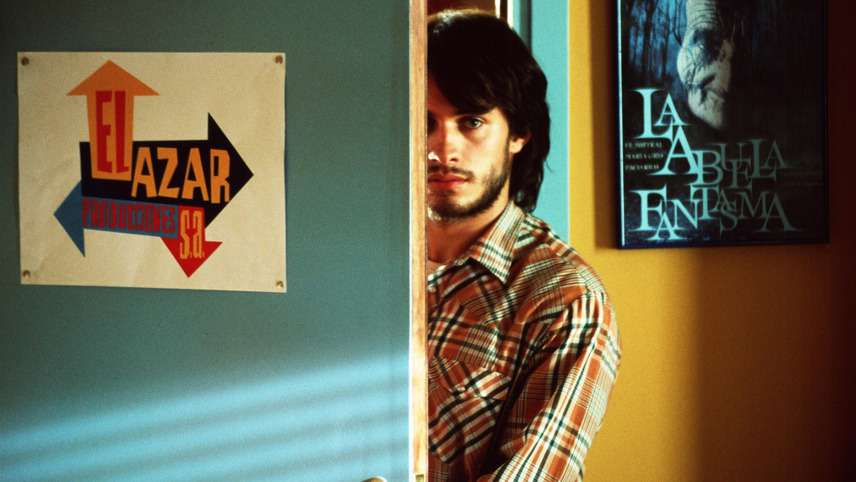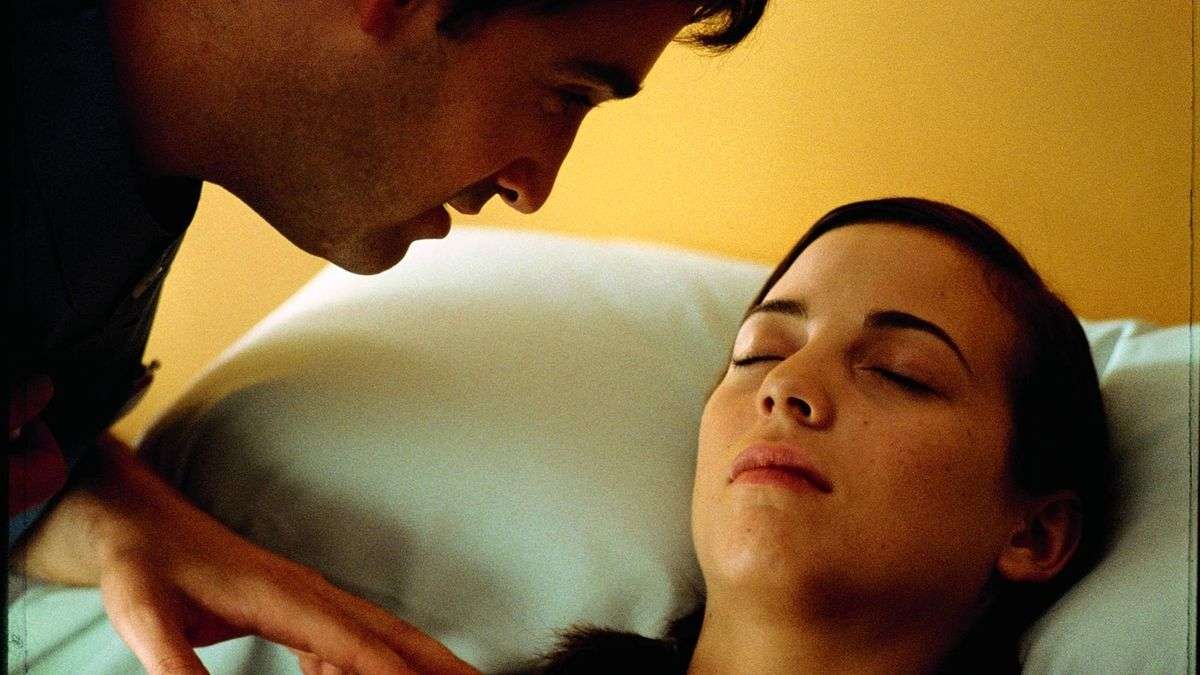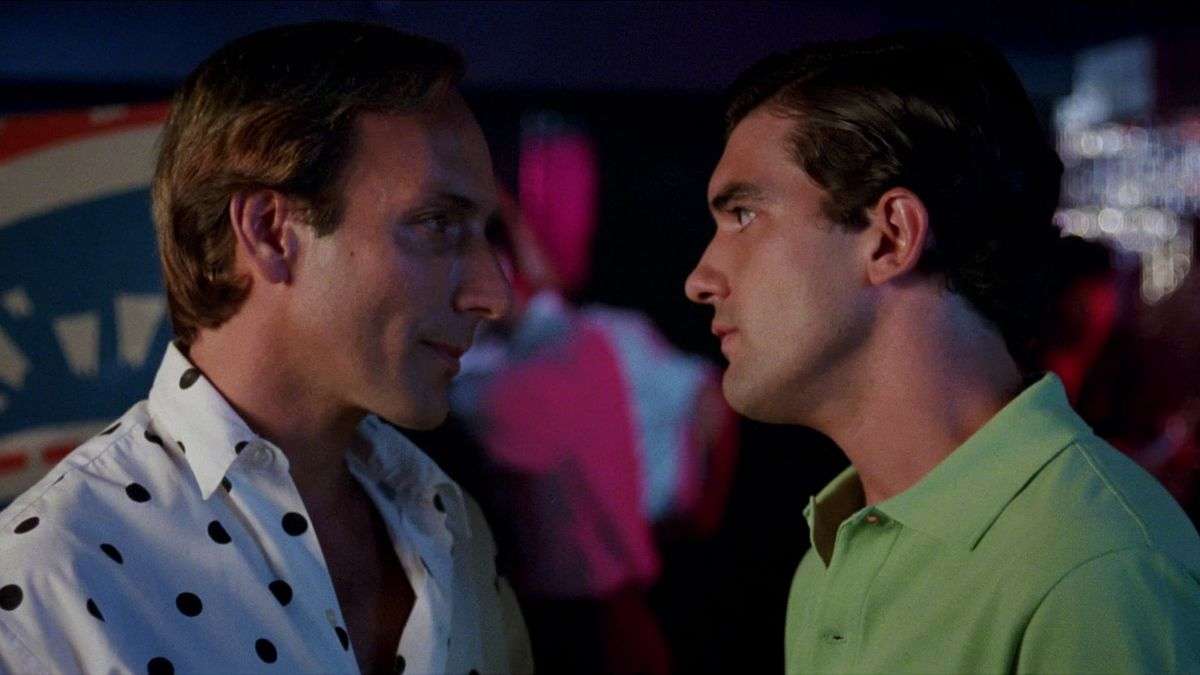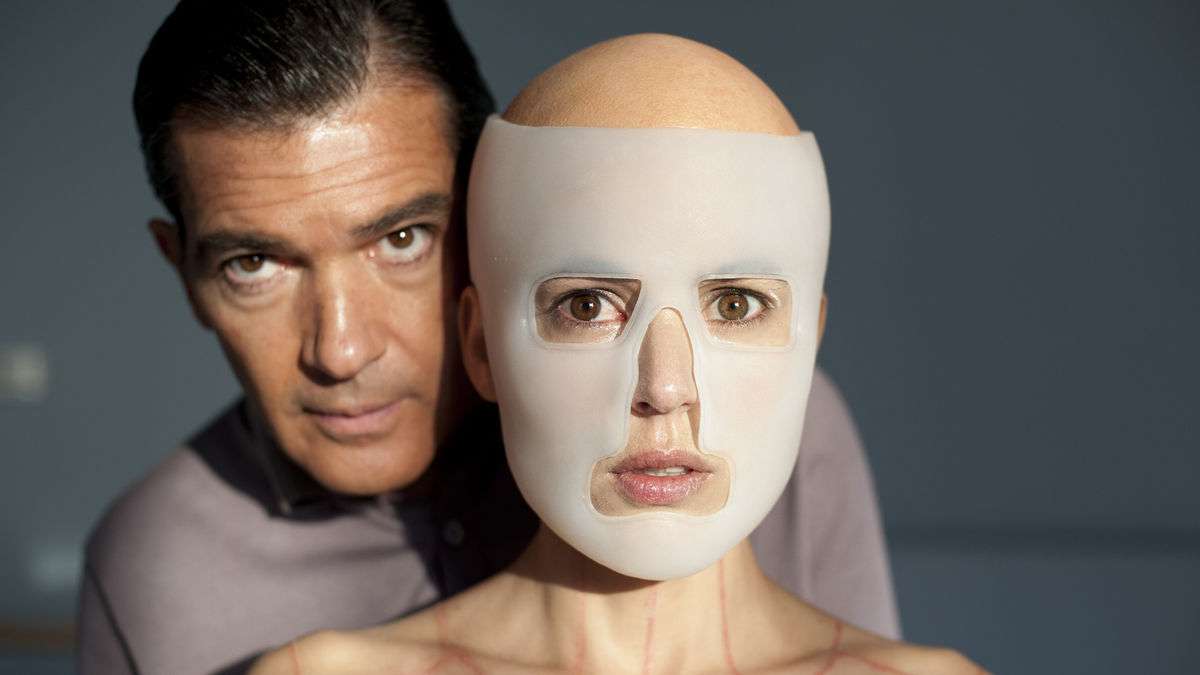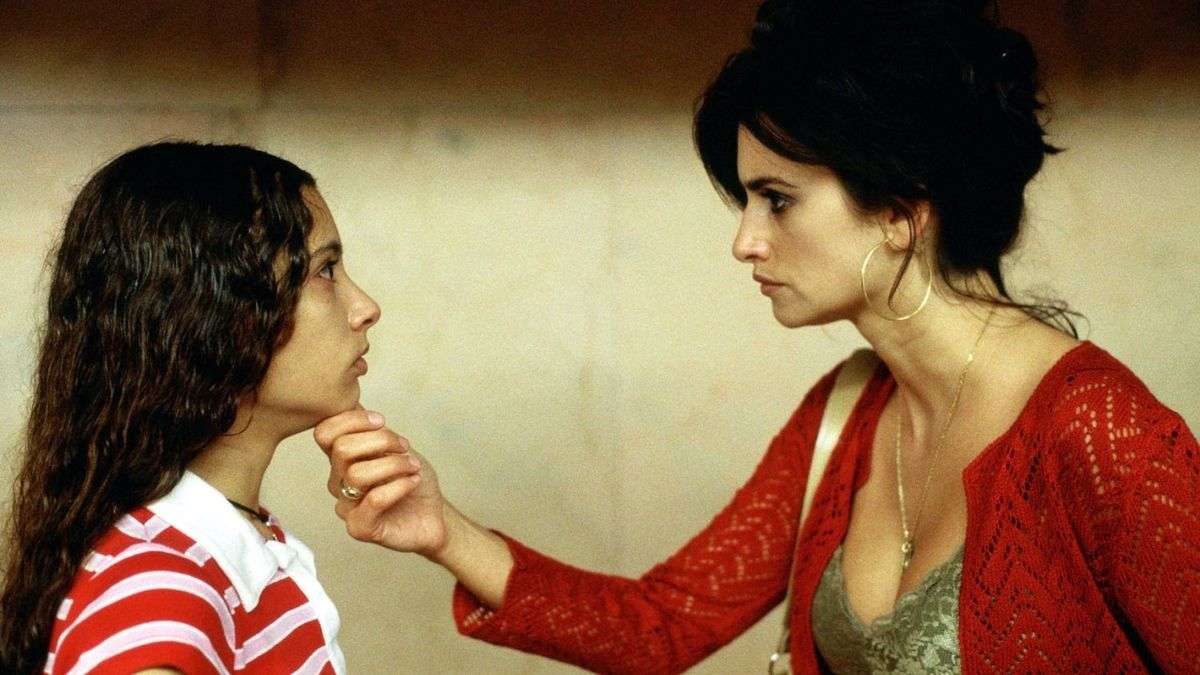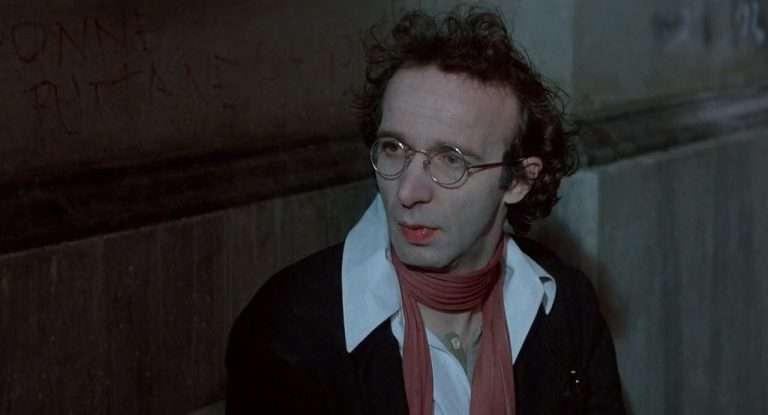Dubbed the “Maestro of Melodrama” by his most ardent supporters (translation: I came up with that nickname in about three seconds one afternoon), Pedro Almodóvar has, since the 1980s, pumped out a steady stream of irreverent, bombastic, sexually adventurous tales of complex design, motivated by the simplest of passions. Over the course of his career, the Spanish auteur has carved a lane for himself as one of world cinema’s most entertaining dramatists, weaving intricate (sometimes too intricate) tapestries of woe, more often than not centered on a sympathetic allyship with the women that have shaped his vision.
That vision has, of course, been subject to some rocky passes, but on the whole, the director’s unapologetic devotion to his characters and their feelings has never wavered. With Almodóvar, consistency is the name of the game; the quality of his output has not necessarily been coherent from the beginning, but the style with which he colors that output has remained distinctly Pedro since day one, and once he figured out how to paint, his films have more or less retained their playful edge up to this day.
While Almodóvar hasn’t been a four-star chef his whole career, it only makes sense to look at those significant moments when he’s stepped into the kitchen and cooked up some magic. Here are the 10 Best Pedro Almodóvar movies:
Special Mentions:
The fun thing about Almodóvar (depending on how you look at it) is that, once you get out of that top 10, his filmography almost immediately starts to look shaky; always at least somewhat enjoyable, only about half of his so-far 22-film output can really be considered better than mediocre. Regardless, even on the outskirts of this top 10, honorable mentions should go out to “Broken Embraces,” in which Almodóvar provides a consistently entertaining and twisty romp without ever indulging in any of the most outlandish elements that sometimes leave him floating away without an anchor.
“Tie Me Up! Tie Me Down!” should also be highlighted as perhaps the first time Almodóvar’s flirtations with controversial material—here, a kidnapper who fosters a sense of Stockholm Syndrome in his victim—comes about mostly unscathed, alongside “Dark Habits,” his deliciously sacrilegious tale of eccentric nuns holed up in a convent, which can likely be pointed out as Almodóvar’s first “good” film.
10. What Have I Done to Deserve This? (1984)
“Dark Habits” may be agreeable as Pedro Almodóvar’s first modest success, but “What Have I Done to Deserve This?” (How much more “Pedro” can a title get?) The following year marks the moment the director finally hits his stride and turns kitsch into something more. In general, apartment buildings and communal spaces have always fascinated the Spanish filmmaker. Maybe it’s because he, like the rest of us, saw “Rear Window” many times and fell in love, or perhaps it’s because these cramped spaces provide an opportunity for diversely bizarre personalities to be bottled together, forced to mix and clash without end.
Where “Dark Habits” helped establish this formula for Almodóvar, “What Have I Done to Deserve This?” allowed him to stretch his legs and go all-out with the zaniness. A dead body, an affable sex worker, a pet lizard, and a hint of the supernatural; all of these elements congeal to make the film the first real instance of the director throwing everything at the wall to see what sticks, with most of it landing with surprising grace.
Because of how genuinely Almodóvar cares for these characters, such a hodgepodge of kooky elements can exist in one place without ever draining the film of its sympathy for the domestic exasperations felt by its central figure, played with great aplomb by Almodóvar regular Carmen Maura. It’s certainly not the best in the elastic “Pedro and his women in an apartment” sub-genre, but it’s definitely one of the more successful.
9. Bad Education (2004)
If Almodóvar is known for two things, it’s for female-centric narratives and ceaselessly elaborate plotting. “Bad Education” is unique in that the former element is almost entirely absent, focusing instead on young men and their past lives in a religious school in the 1960s. On the other hand, that elaborate plotting is here in spades, so much so that “Bad Education” undoubtedly finds itself straining to untangle by the end. That being said, more than any other film, there is a personal angle to Almodóvar’s tender approach here that distinguishes it from most of his other works, all the while making it a perfect fit in his greater canon.
Drawn in part from his own upbringing in an abusive religious school, “Bad Education” anchors itself by way of Gael García Bernal in what may arguably be his best performance, slipping into the chameleonic requirements of a story that explores the hardships of childhood and the comforts that we can provide each other, and those that are lost when we’re pulled apart. With some of Almodóvar’s most controlled framing and coloration yet, “Bad Education” offers a refined vision with a refreshing subject for the filmmaker, allowing him to dig deeper into his own tendencies to see what spills out when the subject is a little closer to home than his usual antics may suggest.
8. Talk to Her (2002)
For all intents and purposes, “Talk to Her” may be Pedro Almodóvar’s most successful film. His first film of the 21st century is also widely regarded as his best film, period, opening the floodgates for Almodóvar’s particular brand of high-end melodrama in the Western mainstream. Earning him an Academy Award for his screenplay—one of the few non-English-language winners and, up until “Parasite,” the last one—and a nomination for directing, “Talk to Her” indeed finds the filmmaker in top form, honing his tendencies for excess into a more grounded tale that nonetheless indulges in the lively narrativization we know and love.
Here, that expressive touch results in a few story developments that have constituted one of Almodóvar’s more controversial outings since the film’s release. Still, his understanding of “Talk to Her” subjects never wavers into endorsement.
Instead, the questionable behavior and obsessiveness that comes from a tale of two men—a man whose lover is in a coma and a male nurse caring for a different comatose patient—gives Almodóvar the space to unpack the intricacies of his style in a way that foregrounds male dominance in a more quietly sinister sense than the usual bombastic flavor he applies to his typically explosive men. Is it actually Pedro’s best? Well, this position should answer that question, but “Talk to Her” is nevertheless a potent distillation of Almodóvar’s strengths (and even some of his weaknesses) as a storyteller.
7. Law of Desire (1987)
Though not as wildly successful as “Talk to Her” was overseas, “Law of Desire” remains, up to the point of its release, Almodóvar’s most noted achievement, particularly at home. The top-earning Spanish film of 1987 is also, by and large, among the best films Almodóvar made in the first decade of his career—a decade marked by mostly scattered ideas and fumbled executions. While not his first outing with the actor, “Law of Desire” finds the filmmaker applying Antonio Banderas’s movie star looks and secret flair for the unhinged narrative that benefits entirely from the nuances of this pairing.
Willing to go full-zany but restrained enough to let his suave demeanor disarm the objects of his obsession, Banderas and the character he plays prove to be the perfect conduits for a filmmaker who, up to this moment, had been struggling to fully reconcile the excess of his style with the discipline required to make those wilder moments fully connect with audiences.
The story of a film director (Eusebio Poncela) and his transgender sister (Carmen Maura) who become the unwitting objects of affection for one of the director’s passing sexual conquests (Banderas), “Law of Desire” is also Almodóvar’s first film focused on a gay lead character, marking a significant moment for the director’s personal growth as a storyteller who imbues his own sensibilities into his work. With the firm establishment of both Banderas and Maura as enduring muses, the film also stands firmly as one of Almodóvar’s more under-appreciated ventures in the modern day.
6. Parallel Mothers (2021)
Most studies of Almodóvar and his work within the context of Spanish cinema will tell you how the filmmaker’s irreverent, transgressive style puts him at odds with most of his contemporaries of ‘80s and ‘90s Spanish cinema.
While filmmakers like Víctor Erice and Carlos Saura made films more firmly implanted in the traumas of Francisco Franco’s fascist regime, Almódovar instead moved towards the open expressiveness that Franco’s downfall enabled for Spain (this art movement was called “La Movida Madrileña”). Though the extent of Almodóvar’s supposed “ambivalence” towards his country’s traumas is greatly exaggerated—laugh to hide the pain, after all—by 2021, he finally seemed ready to tackle Franco’s horrors head-on with “Parallel Mothers.”
Also Related to Pedro Almodóvar Movies: 20 Important Queer Movies Of The 20th Century
Well, “head-on” in the sense that one of his films finally makes a direct point out of addressing the White Terror that left thousands of Spanish citizens during and after the Spanish Civil War executed and unceremoniously buried all over the rural parts of the country.
Narratively, this point is intermingled with a far more typical Almodóvar-ian plot involving a pair of new mothers (Penélope Cruz and Milena Smit) whose lives become entangled after meeting in the maternity ward. One of several instances in which Almodóvar utilizes Cruz’s endless allure to ground a deceptively personal affair, “Parallel Mothers” proves that, even in his seventies, Almodóvar is a filmmaker still searching inward to find the pieces that make him tick.
5. All About My Mother (1999)
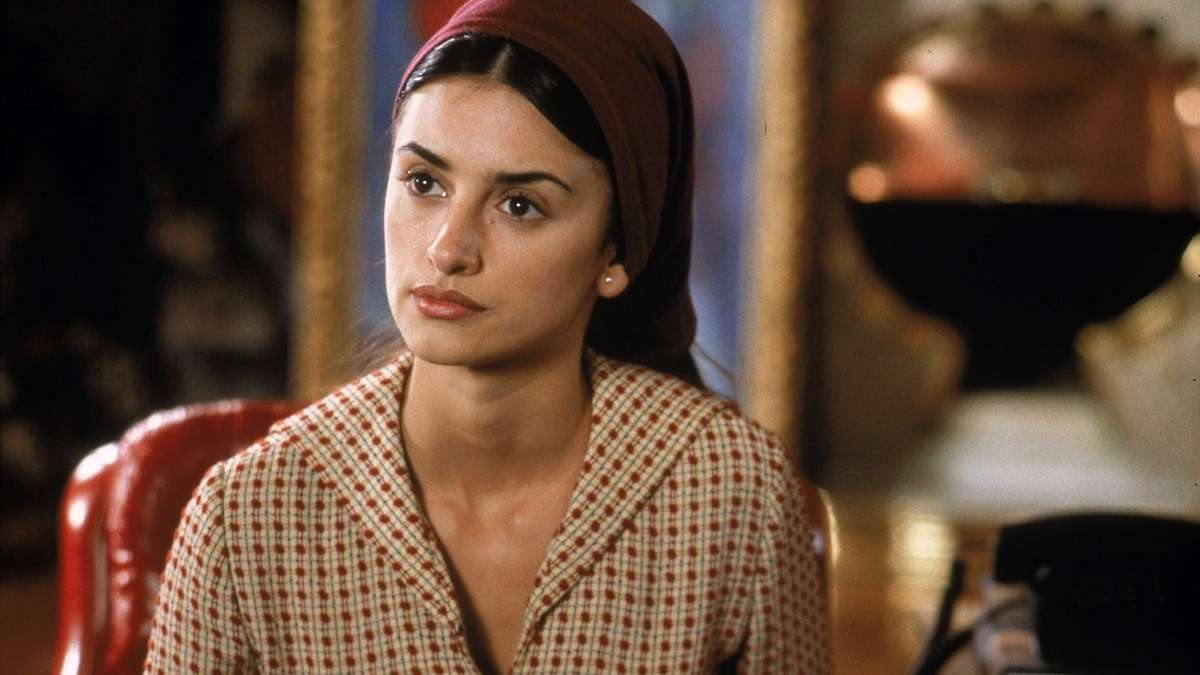
If the next century would begin with what many perceive to be Pedro Almodóvar’s magnum opus, the previous century would end with about as solid a tee-up as one could hope for. “All About My Mother” was actually the director’s first flirtation with Oscar gold, having won Best Foreign Language Film for the intersecting (surprise!) stories of women in Spain as they deal with existentialist troubles, from the losses of loved ones to the gender dynamics of their home nation.
“All About My Mother,” like “Talk to Her” after it, is fascinating because it’s one of Almodóvar’s most revered efforts. However, none of his usual muses—Carmen Maura or Antonio Banderas—are there to sink their claws into his meaty writing.
Yes, Penélope Cruz marks her second collaboration of what would be a genuinely fruitful partnership, but her role is a passing affair at best. Instead, Argentine actor Cecilia Roth takes the reins on one of the director’s most intricate examinations of performance, both in front of and behind the giant red curtain. A strange but altogether fitting companion piece with the likes of John Cassavetes’s “Opening Night” or Alejandro González Iñárritu’s “Birdman,” “All About My Mother” takes to the stage to reveal the depths of our own internal melodramas, with some of his most touchingly realized characters yet.
4. The Skin I Live In (2011)
Once more, taking on the role of a dangerously obsessive and possessive man, Antonio Banderas is the lynchpin that makes “The Skin I Live In” one of the most unexpected yet entirely fitting entries in Almodóvar’s oeuvre. Skirting the usual flair for melodrama, this film channels that excess into a psychological body-horror film, most obviously inspired by Georges Franju’s “Eyes Without a Face.” However, Almodóvar’s thirst for twisting the knife comes about through revelations that will either enthrall you or turn you away—whether from disgust or mounting disinterest. It’s a pretty big swing, but it’s one that’s as admirable as it is terrifying.
Following a plastic surgeon and the mysterious woman at the center of his life, “The Skin I Live In” crawls under your own skin with one of the most bone-chilling turns that any actor as inherently likable and charming as Banderas could muster; think Patrick Bateman but with a far more centered rage.
One shot in particular still haunts my brain five years after my initial viewing, wherein Banderas looks straight into the camera and delivers a line with such fuming conviction that it will burn into your retinas and keep you up at night out of fear that you may accidentally cross paths with someone this deceptively demented. “The Skin I Live In,” like most of Almodóvar’s films, is flawed, but its flaws are the sort that yields the strongest reactions in either direction.
3. Women on the Verge of a Nervous Breakdown (1988)
You know what? Maybe this is the most “Pedro” a film title can get. Everything you need to know about “Women on the Verge of a Nervous Breakdown”—and, really, Almodóvar as a whole—can be summed up in that title. A man so laser-focused on the struggles of his ladies in a male-dominated sphere (so much so that his frequent collaborators have earned the nickname Chicas Almodóvar), here Pedro perhaps reached the zenith of his wacky antics in conjunction with such sympathetic portrayals of the horrors that come from masculine ego and indifference.
Following a series of women whose lives are all affected by male self-centeredness (often, courtesy of the same man), “Women on the Verge of a Nervous Breakdown” foregrounds the lives of these ladies by placing these torturous fellows far in the background, often a nagging voice on a telephone line or a flat image on the TV; a distant presence, but one still lingering enough to cause endless headaches.
Carmen Maura, Julieta Serrano, María Barranco, and Rossy de Palma hold it down with their own individual senses of fracturing selfhood. At the same time, Banderas once again lingers in the background to remind us of the less innocent capabilities of Almodóvar’s dudes. Even if it’s not quite his most acclaimed movie, “Women on the Verge of a Nervous Breakdown,” it is one of his most gloriously messy and iconic.
2. Volver (2006)
Perhaps the best balance of Almodóvar’s outlandish storytelling tendencies and the more grounded characterization that defines his most resonant work, “Volver” once again takes an ensemble of women to show how the horrors of men can bring them together as a show of solidarity and unwavering support. This time, Almodóvar assembles the generations together and brings his journey full circle, enlisting his current muse, Penélope Cruz, with his previous muse, Carmen Maura—even Chus Lampreave, an early frequent collaborator of the director’s, enters the fray for a small role shortly before her passing, adding yet another generation to the mix.
Returning to his well of melodramatic excellence, “Volver” sees Almodóvar assembling this murderer’s row of female talent to address the tragedies of death and loneliness as only he could through the lens of unity in times of strife. Sometimes, that unity involves a simple reconnection of tattered familial love, and sometimes, that unity involves the hasty disposal of a dead body… you know, it’s a typical Tuesday for Pedro.
Through it all, though, Almodóvar maintains a sense of precision that came with his works in the new century to fully cement him as one of the most enduring and unique voices in European cinema, exploding with the full force of a sensuous elegy coming from Cruz’s teary eyes and her gorgeous voice.
1. Pain and Glory (2019)
Nearly every auteur filmmaker, at some point in their life, feels the need to put together their own “8½,” a metatextual journey into their one psyche that lays all their virtues and flaws on the table in an attempt to reconcile their legacy with the challenges that helped them shape it, alongside the uncertainty of where it will take them down the road. Pedro Almodóvar’s existential crisis came in 2019 with “Pain and Glory.” As is his tendency, Almodóvar ended another decade with one of his finest efforts, blending his focused strengths and his insecurities into a contemplative and stylistically potent career statement.
By his own admission, “Pain and Glory” is less Almodóvar reckoning with any sense of writer’s block and more about the fear he has of one day reaching that point—and his continued output in his mid-70s proves that he has no intention of ever wanting to slow down.
In any case, in yet another collaboration with Antonio Banderas—this one allowing actor and director to bring out the best in one another, at once subdued and urgent in their expression of mutual affection—Almodóvar makes the case that a mind this sharp and insightful, indeed, would be poorly served trapped in an apartment with no stories to tell. As its final moments grace the screen, “Pain and Glory” quickly reminds us that inspiration can always strike; it’s never too late, and Pedro Almodóvar still has plenty of gas (and gazpacho) left in the tank!



